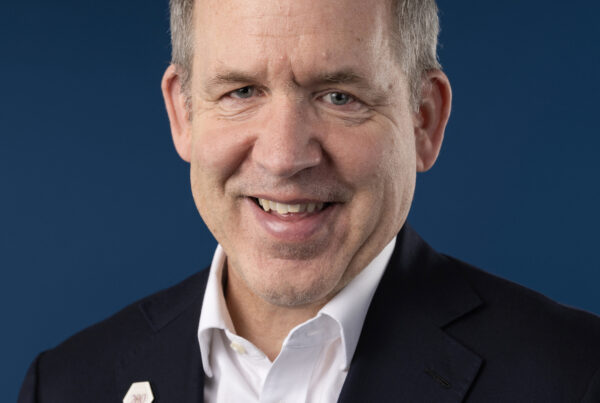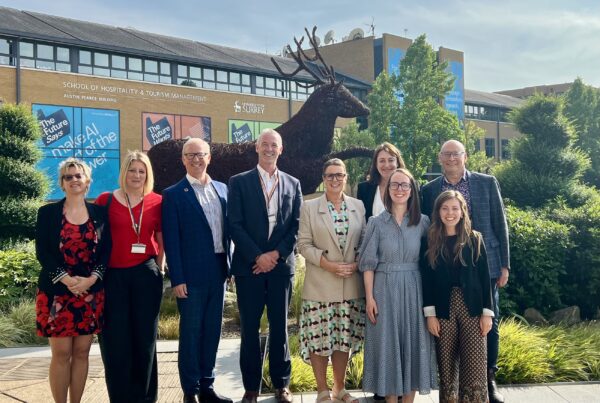We need future solutions for higher education
We have a higher education model under pressure, which means we need responses that take advantage of opportunities for growth to meet future skills needs. This requires accelerating a search for a variety of new and different future solutions.
The rate of technology change impacting current higher education practice is increasing at unprecedented rates. When ChatGPT emerged in November 2022 AI became a game changer for society broadly and business investment, policy making, professional work and learning specifically.
We are still gaining further clarity on its future implications. What seems certain is there will be few areas of business, professional and knowledge and learning activity – or actors within them – not impacted. This all has profound implications, and threats and opportunities, for tertiary education systems and the strategies of learning providers operating within them.
There are some global providers making substantial progress to embrace technology and change their business models. Arizona State University, Southern New Hampshire University and Western Governors University in the US are each held up as significant technological innovators by many, while ignored by others. They are recognised by some for shifting the dial in achieving equity outcomes and serving new markets of learners through rapid technology-enabled growth.
Something has to give
Most would argue that we need much broader and more substantial change and that the underlying tertiary education system is broken. Yet it is clear we won’t only see attempts at change by current providers, or from actors in current systems operating alone.
Regulators of providers and policy makers trying to keep up are getting left behind. The Australian Universities Accord process has a widely supported vision of growth through equity. But it commissioned research, only released last month (some months after the Accord’s release), into the disruptive potential of AI and other drivers, yet the final report largely ignored the findings.

Other innovators among current providers include Torrens University Australia. Torrens has grown faster than all other universities in Australia over the last 10 years, with a technology-enabled, employer-oriented model. It is unusual in being a US privately invested disruptor. Torrens and the US examples are notable innovations and new solutions within the system, but at its edges.
More current universities are distracted by a rankings-oriented crusade to maintain prestige, and fights over international student policies, than are searching for innovation. Meanwhile staff, learners and employers see the system as suboptimal. This is in marked contrast to marketing messages every time a ranking is published. This is a mass case of denial.
Where are new competitors and future solutions emerging?
What is clear is that change in the system will partly come from new players. These may be the sorts of new providers, starting from clean slates, that SEEK Investments back. These have occurred in situations where insights of what new learner markets need, have helped identify which innovative ventures to invest in. These included SNHU and ventures like Alura in Brazil. Their story is told by their brother founders features in our latest HEDx podcast in an interview I did with Joshua Nester of SEEK Investments.
Alura see their range of ventures in IT skills as a flywheel. They are teaching 2million+ K-12 learners in partnerships with public schools, and recruiting them into an acquired and remodelled public university. The graduates then gain Alura skills as individual lifelong learners, and form B2B links with Alura as corporate educators. Can’t more universities achieve more with integrated lifecycle future solutions like these?
New players include LinkedIn for Learning, who are using data analytics of learner markets to guide partners to offer new future learning solutions to markets more quickly than competitors. The race to align new product evolution and mode of learning delivery serving a new market need for skills, is becoming the competitive priority, more than rankings. Which university will change how they compete from seeking prestige to seeking new market growth by differentiating?
New players are big technology companies such as new HEDx partner Microsoft, benefitting from a scale of investment and mastery of technology in an AI world, and their skills-based certificates. And they are EdTech pioneers, on purpose-driven agendas of change, in close touch with the changing needs of future learners.

It’s time for us all to look elsewhere for solutions
There is some chance current education providers can partner with some of those above and evolve. But it needs different leadership, governance and culture. The challenge is in how leaders are appointed, and the cultures they inherit. The pedigree they bring, and skills to draw on, for business transformation, are not the same as becoming professorially respectable in a current operating model. This inhibits ambition, innovation and change. Our public system also has unwieldy, interventionist regulation and policy settings. All these features are non-conducive to innovative future solutions.
HigherEd is not alone in being a sector where change and solutions emerge from outside current systems, operators and providers. University demand patterns, public and government support, or lack thereof, and the criticism of graduates’ skills by employers, provide the grounds for change and possible disruption.
We will see new future technology-based solutions to education’s growth opportunities. It is not a question of whether the broken model of HigherEd is ripe for change, as much as how and through whom new market growth will be realised.
What the sector really needs
In these circumstances, what all existing and new actors in the sector need is help in facilitating transitions. The future of all actors needs to be better informed about future solutions.
The sector has built barriers to change in its legacy and cultural practice over many years. What current providers, and their leaders and practitioners need is awareness of innovation and solutions emerging from others. They can grow new markets in doing so, but need insights into innovation. What disruptors need is a means of engaging the sector as partners.
We are now in the phase of future solutions serving a broken HigherEd model and new growth opportunities at the same time. The combination of a burning platform and burning ambition will be irresistible.
A means of engaging with future solutions, in establishing a new model of higher education is needed now. It is where we will find new ways to meet skills needs and achieve growth through equity.
These are significant growth opportunities ahead for our new learning economy. They will attract private investment in partnerships, and innovation using technology, unconstrained by legacy. Future solutions that emerge in this way can achieve real change.
HEDx is trailblazing these Future Solutions
Insights into innovative future solutions is the focus for forthcoming podcasts on HEDx with partners and our next event. Our spring conference will be hosted by The University of Queensland on October 31st on campus at St Lucia. It will be held during UQ’s Teaching and Learning week with its aims to be a university that is future ready. The event will showcase innovations like those above. Details are available here.

UQ leadership clearly sees the need to find future solutions and to take all in its community on a journey to learn about them. We commend them for this. The commitment and technology foresight of La Trobe University among others is also demonstrated by what we are reading in links below.
“University leaders can intentionally choose strategies and systems not impacted by AI, or build strategies around it, but to be apathetic or ignore it is negligent and widespread” – George Siemens of UniSA
A recent HEDx podcast featured George Siemens who is pioneering the development of a new AI-first university with Paul J. LeBlanc. Paul has now stepped down from having led Southern New Hampshire University to be one of the world’s largest online universities. He is now exploring a new green field of innovation unconstrained by current university operations, but in a way that can re-inform SNHU’s own journey through further change.

Not all leaders are stepping out of a Presidency role of an innovative online university and creating an AI-first university. Not all leave their mark on a university or have it leave a mark on them like Paul and SNHU. It is a different version of having a portrait of yourself left in the chancellery. But all leaders need to keep an eye on and learn from disruptive innovations. It is where future solutions of growth through equity may come from.









